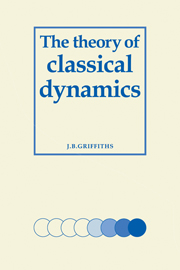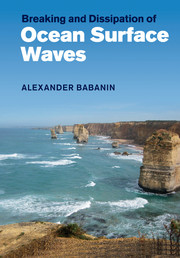Refine search
Actions for selected content:
8126 results in Fluid dynamics and solid mechanics
4 - Particle pair interactions
-
- Book:
- A Physical Introduction to Suspension Dynamics
- Published online:
- 05 June 2012
- Print publication:
- 24 November 2011, pp 84-102
-
- Chapter
- Export citation
7 - Shear flow
-
- Book:
- A Physical Introduction to Suspension Dynamics
- Published online:
- 05 June 2012
- Print publication:
- 24 November 2011, pp 155-191
-
- Chapter
- Export citation
PART I - MICROHYDRODYNAMICS
-
- Book:
- A Physical Introduction to Suspension Dynamics
- Published online:
- 05 June 2012
- Print publication:
- 24 November 2011, pp 7-8
-
- Chapter
- Export citation
INTERLUDE: FROM THE MICROSCOPIC TO THE MACROSCOPIC
-
- Book:
- A Physical Introduction to Suspension Dynamics
- Published online:
- 05 June 2012
- Print publication:
- 24 November 2011, pp 103-104
-
- Chapter
- Export citation
Contents
-
- Book:
- A Physical Introduction to Suspension Dynamics
- Published online:
- 05 June 2012
- Print publication:
- 24 November 2011, pp v-viii
-
- Chapter
- Export citation
Prologue
-
- Book:
- A Physical Introduction to Suspension Dynamics
- Published online:
- 05 June 2012
- Print publication:
- 24 November 2011, pp 1-6
-
- Chapter
- Export citation
1 - Basic concepts in viscous flow
-
- Book:
- A Physical Introduction to Suspension Dynamics
- Published online:
- 05 June 2012
- Print publication:
- 24 November 2011, pp 9-27
-
- Chapter
- Export citation
PART II - TOWARD A DESCRIPTION OF MACROSCOPIC PHENOMENA IN SUSPENSIONS
-
- Book:
- A Physical Introduction to Suspension Dynamics
- Published online:
- 05 June 2012
- Print publication:
- 24 November 2011, pp 125-126
-
- Chapter
- Export citation
6 - Sedimentation
-
- Book:
- A Physical Introduction to Suspension Dynamics
- Published online:
- 05 June 2012
- Print publication:
- 24 November 2011, pp 127-154
-
- Chapter
- Export citation

The Theory of Classical Dynamics
-
- Published online:
- 25 October 2011
- Print publication:
- 30 May 1985

Breaking and Dissipation of Ocean Surface Waves
-
- Published online:
- 25 October 2011
- Print publication:
- 19 May 2011
SYMMETRIC SOLUTIONS FOR TWO-BODY DYNAMICS IN A COLLISION PREVENTION MODEL
-
- Journal:
- The ANZIAM Journal / Volume 52 / Issue 3 / January 2011
- Published online by Cambridge University Press:
- 21 October 2011, pp. 263-288
-
- Article
-
- You have access
- Export citation
7 - Simplified schemes
-
- Book:
- Modelling Turbulence in Engineering and the Environment
- Published online:
- 05 November 2012
- Print publication:
- 20 October 2011, pp 240-312
-
- Chapter
- Export citation
8 - Wall functions
-
- Book:
- Modelling Turbulence in Engineering and the Environment
- Published online:
- 05 November 2012
- Print publication:
- 20 October 2011, pp 313-347
-
- Chapter
- Export citation
References
-
- Book:
- Modelling Turbulence in Engineering and the Environment
- Published online:
- 05 November 2012
- Print publication:
- 20 October 2011, pp 348-372
-
- Chapter
- Export citation
5 - Modelling the scale-determining equations
-
- Book:
- Modelling Turbulence in Engineering and the Environment
- Published online:
- 05 November 2012
- Print publication:
- 20 October 2011, pp 143-169
-
- Chapter
- Export citation
Nomenclature
-
- Book:
- Modelling Turbulence in Engineering and the Environment
- Published online:
- 05 November 2012
- Print publication:
- 20 October 2011, pp xii-xxii
-
- Chapter
- Export citation
1 - Introduction
-
- Book:
- Modelling Turbulence in Engineering and the Environment
- Published online:
- 05 November 2012
- Print publication:
- 20 October 2011, pp 1-12
-
- Chapter
- Export citation
4 - Approaches to closure
-
- Book:
- Modelling Turbulence in Engineering and the Environment
- Published online:
- 05 November 2012
- Print publication:
- 20 October 2011, pp 60-142
-
- Chapter
- Export citation
Chapter 6 - Modelling in the immediate wall vicinity and at low Ret
-
- Book:
- Modelling Turbulence in Engineering and the Environment
- Published online:
- 05 November 2012
- Print publication:
- 20 October 2011, pp 170-239
-
- Chapter
- Export citation
